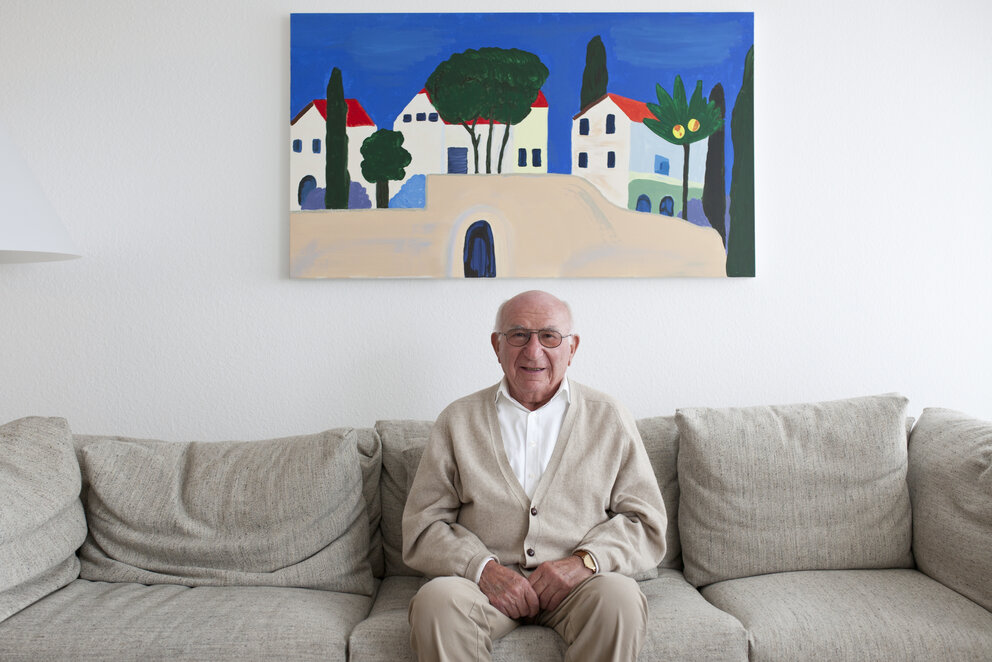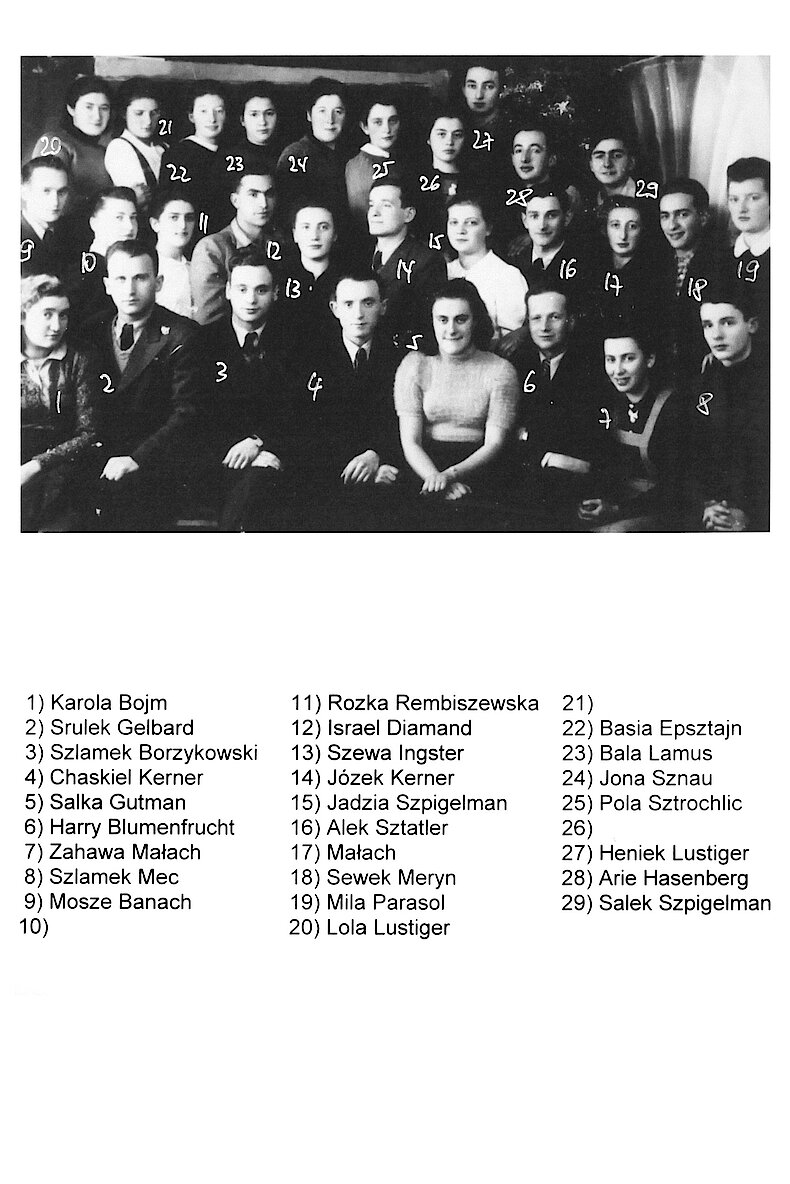
Siegmund Pluznik
About Siegmund Pluznik
We found Siegmund Pluznik to be a highly educated, enthusiastic, helpful and very warm-hearted man. Unbelievable when you consider what the 90-year-old experienced during the interview. Born in 1924 in Będzin (Poland), not far from the German border, he experienced the occupation by the German Wehrmacht at an early age. People from an educated cultural nation, he thought, were marching in. But it wasn't long before these people set fire to the town's synagogue, trapping hundreds of Jewish people inside.
Siegmund Pluznik witnessed many of the atrocities committed by the Nazis. When he was banned from attending school because he was Jewish, he was given secret lessons: in hindsight, a first step towards resistance. In 1941, he finally went underground with a group of young people. They went on the run with forged papers and with fear as their constant companion. But together they vowed to survive to tell their stories. After the war, he meticulously collected facts and documents about the time and set up his own exhibitions. Exhibitions that memorialise his life, his family and friends and give names and faces to the Jewish resistance.
Siegmund Pluznik died in April 2016 at the age of 91. We miss him very much.
"To help someone in need, you don't have to have a title or a degree. You just have to have your heart in the right place. You can help someone with a little something, you can help with a gesture."

A picture to live on
"We made a promise to ourselves to survive so that we could tell the story."
During the war, the youth organisation Ha'noar Hazioni gave Siegmund Pluznik courage, support and, above all, the impetus to fight back. The group with which he went into hiding and fled emerged from this organisation. In a cellar in fear of their lives, the young people promised each other that they would survive at all costs in order to speak out against oblivion. Siegmund Pluznik was driven by this promise again and again after the end of the war. He organised exhibitions, collected documents and gave faces back their names. In 2015, when he told us about this promise again during a visit, he was close to tears. This situation prompted us to decide on a commentary image that carries on this promise.

Our encounter
Siegmund Pluznik was a clever man, always with a goal in mind, straightforward and incredibly helpful. He met us not only with openness, but especially with a willingness to help. After a few phone calls, he stood in front of us at our first meeting with a straight back and appeared young and dignified. During our conversations, he not only opened his front door to us, but also his heart, and we laughed and cried with him. We were particularly surprised to learn that he lived in an institution for senior citizens that has made it its mission to welcome Jews and Christians. So he actively sought out encounters, which we also felt when he called us and tried to encourage SECOND WITNESS and again found new survivors who wanted to talk to us. Each time, his effusively loving words touched our hearts.
The fact that he was a man full of surprises was also evident when we entered his flat: We saw a thoroughly modern flat, kept in white and not at all like that of a man over 90 years old. But the straight lines suited him. Another surprise for us was his own exhibition, which he explained to us in detail: many years ago, Mr Pluznik had started to research the history of his hometown and his resistance group and created an impressive contemporary testimony using authentic documents and photos. All the greater the honour that he has bequeathed this exhibition to us. His commitment was also evident in the fact that he was involved in identifying people in photographs from Auschwitz that had been preserved. A difficult but important task. We realised how much he knew about history and politics, how reflective he was about himself and the people around him and how important it was for him to tell stories. These stories described incredible experiences for us and we are proud and happy that he shared his memories with us and that he became our friend.
We wish to be as smart, young at heart and interested in everything as Siegmund Pluznik in his old age and thank him for everything.
